New Talk "Designing for Trust: How China's Free Lunch avoided The Curse of Kelvin" and Notes from Media Evolution's The Conference
Designing for Trust: How China's Free Lunch avoided The Curse of Kelvin by prioritizing the users's needs over the system's needs
Free Lunch is a non-profit in China that uses a crowd-sourced reporting and monitoring system to gain donor's trust. The system is filled with inefficiencies and redundancies, but it's very good at getting people to donate and participate. How did it accomplish this? Instead of designing for efficiency, Free Lunch was designing for trust. In a historical parallel, the measurement of electricity consumption in the 19th century reveals that accuracy in measurement was compromised to gain consumers' trust in devices. Both Free Lunch and and electricity measurement reveal that making products/services more usable may require us to prioritize the user's need. Several design principals should be considered when designing for trust.
[all videos of talk available on Media Evolution's website on on itunes]
When I agreed to participate in Media Evolution’s, The Conference, in Malmö, Sweden, I was still fresh out of my fieldwork in China. One of the biggest issues ethnographers encounter after spending years and years in the field is that they become myopic. They begin to think that their fieldsite is super special and that they are witnessing a phenomenon that has never happened in human history.
I think my fieldsites are awesome - I love all the places I research. But the important thing when doing global fieldwork is to find the connections between places. So I wanted to give a talk that would help me step into another place - a historical space.
In psychology, it is said that we repeat the same trauma until we understand why we do it. I think history works the same way. We repeat the same processes until we understand why. One of these processes is our obsession for efficiency. I was led to a really amazing book by G.J.N. Gooday, The Morals of Measurement: Accuracy, Irony, and Trust in Late Victorian Electrical Practice. After reading it, I started to dig into the history of electricity and saw all these parallels with what I was witnessing in China - that what users need are systems that they can trust, not necessarily the most efficient systems.
Principles to consider when designing for trust
During the last half of my talk, I discuss several core principals that need to be considered during the design process. These principles are most relevant for those of us who createparticipatory and social media oriented platformsbecause these communities collapse and or unable to form without trust:
- Lower the threshold for your users to establish trust. Make it easy for them to judge the veracity of information sources.
- Conduct a thorough ethnographic study on how users conceive of information & trust. Because conceptions about what information is varies depending on cultural and social contexts and understanding this affects the design process.
- Ask what user-centered values you want to bring into the service and product design such as transparency or familiarity.
- Treat these values as healthy constraints for innovation, not against innovation
- But at the same be clear about what values are being comprised. Understand that some design compromises are only appropriate for certain contexts. Compromises in efficiency may make sense for one group of users but not another.
- Design minimally enough so that you can watch what user centered values emerge out of the interaction.
- Avoid the Curse of Kelvin - just because something isn't quantifiable doesn't mean that it is value-less (
These principals become even more critical to consider when working with a team of designers and technologists who may not be as familiar with the cultural context of the intended user base.
And you'll see how throughout my talk, I try to show that we've done this before. Every time we come across a new way to measure something, we think that we've reached a new level of objectivity and perhaps we have, but the deceit is when we close ourselves off to other forms of measuring - essentially other forms of seeing.
Challenges in a world of big data
I closed my talk with a discussion of some of the challenges we are going to face in a world of big data, one of them being that it's easy to believe that we've finally figured out an objective way to measure humans. And we see this in all the new attempts to measure trust online, like TrustCloud that quantifies your online reputation into a “trust score” and Legit that creates a “reputation score” that follows you across sites.
With more companies building services modeled for a sharing economy, reputation and trust become more important than ever for these services to succeed. As such, the measurement of trust and reputation become critical. Companies need to build in these measures to help users determine the risks involved in an interaction. But I am suspicious of companies who build platform independent products to measure trust. Since they are not building a product for a specific site, they are marketing their product as an objective score to determine trustworthiness across services. For example, Klout is not service specific, it is a stand alone product that helps you determine someone's online reputation.
My concern is that users of services like Klout, Trustcloud and Legit are moved into a world where their online movements are constantly being monitored and used to determine their eligibility for participation in other services. These service's algorithms are not programmed to not recognize the nuances of human communication such as humility, generosity, pain, guilt, fear, or bravery - all emotions that are critical to assessing trustworthiness online. My worry is that these new reputation economy indicators are creating new divides, leaving out those who don't know how to appear "trustworthy" in a new platform.
I'll stop ranting here and let you listen to my talk!
And as I usually do, the list of papers and books that I consulted for my talk are at the end of this post.
Our awesome panel and Q&A
I spoke on the China Africa: Drivers of Innovation Panel with Mark Kaigwa, with Geraldine de Bastion as our moderator, who gave a lovely introduction.
China Africa: Drivers of Innovation - We know pretty well what is going on in our own part of the world. But there is a lot we can learn about future consumer behavior by looking at other parts of the world. In this session we’ll examine the different cultures of innovation and human behavior in parts of China and Africa.
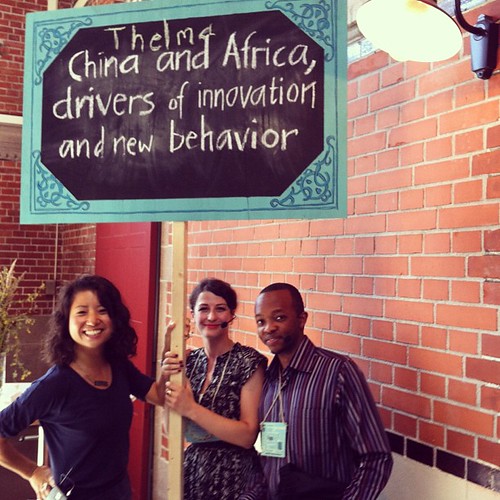
Do check out Mark's talk about the state of mobile growth in Africa (below) and his post-conference chat with The Next Web.
Heidi Forbes Öste created a wonderful visual of our talk.
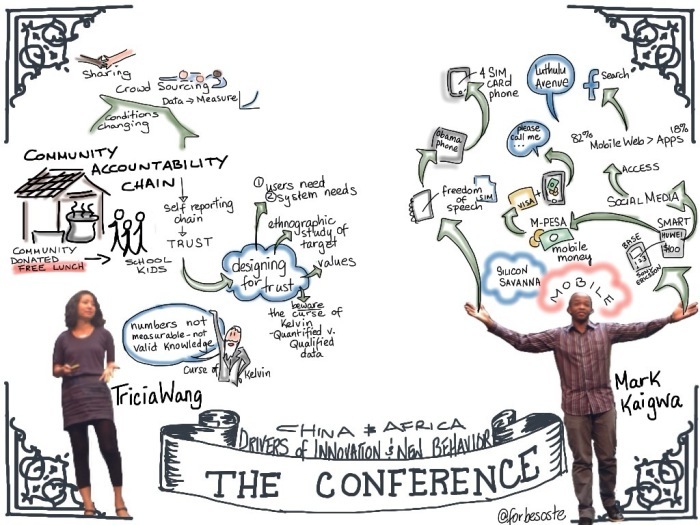
Geraldine moderated the Q&A after our panel where Mark and I had to take some hard questions from the audience - the Swedes man, they're rough! :) We talked about different kinds of sharing culture and what counts as innovation. You get to hear Mark and I in the raw!
Oh why thank you!
- Before I gave my talk, I had a chance to chat with fellow conference co-speakerLaurenAnderson, Innovation Director of CollaborativeConsumption, who told me about TrustCloud and Legit. So I have to thank her for that last-minute tip that made it into my talk. It was good lesson that holing yourself up in your hotel room to prepare a talk isn't always the best tactic. I'm really happy that I left my room and ran into Lauren downstairs at the hotel!
- Thanks to conference co-organizers Martin Thörnkvist and Yasemin Arhan Modéer for inviting me. Martin was quite persistent and I'm glad that he was!
- Thanks to Kevin Lee who told me about his experience at The Conference 2011. We chatted in the new China Youthology courtyard in Beijing, China.
- Kevin Slavin - you made me realize that Lord Kelvin was critical to the story. I never said the Curse of Kevin, but it would've been funny if I did!
- Kenyatta Cheese - you were critical to helping me reshape the story and you hung in there with me until I had to get on the plane.
- And a big thanks to The Conference for treating the speakers like royalty. Pernilla, thanks for coming to the airport early in the wee morning to pick me up!
Some notes:
By design, the parallel sessions made it impossible for an attendee to go to all the talks at the conference. So I only have notes to a few talks. Check out all the amazing videos from the speakers on The Conference's website.
Kater Miltner wrote an article summarizing some of the talks.
Media Evolution has two conference recaps so far here and here.
Here are some of my notes from a few panels I stopped by:
- Tine Thygesen - Relevance and trust are two most important things for building a site
- Noah Brier from Barbarian Group - You (social media brands) are competing for your friend's attention
- Nikolaj Hyholm from Sunstone Ventures- There is a difference between uncertainty and risk. Uncertainty - will this even work. Risk - will you be able to execute. Just because you have a product does not mean you have a market.
- Lauren Anderson from Collaborative Consumption - access is more important than ownership - this is a movement as important as the Industrial Revolution
- Ho Jun Song - "When art becomes useful we call it technology, when technology becomes usefulness we call it art."
I didn't get to see Anna Haupt's talk about the Invisible Bike Helmet, but it did lead me to DesignTorget where I tried to buy it. That is when I learned that you are not allowed to take the invisible bike helmet on the plane because it will explode!
After going to Mai-Li Hammagran's talk I was inspired to buy a Mutewatch!
There are few talks that I really enjoyed re-watching:
Ho Jun Song of the Open Source Satellite Project
Lauren Anderson from Collaborative Consumption
Jake Bartonof Local Projects:
Malmö and The Conference rocks!
I didn't fall in love with Sweden the first time I visited, nor the second, or third, or forth. But now I know why. It was because I was spending most of my time in Stockholm. Stockholm is not really a spontaneous city. Everything and everybody works so perfectly on time that it just seems a bit predictable (though I love Rinkeby!). But luckily I have had the chance to get to know another side of Sweden through Media Evolution's The Conference.
I started doing this new thing where I request to spend a few days after a conference in a city so that I can get to know it. And I am so glad that I made time for it this time because I fell in love with Malmö. So much so that I would love to return to write and work there.
An an expression of my love for Malmö I wrote a letter of some reasons why the city rocks: A Crane to Lift Tears: 17 Reasons why Malmö is the most awesome Scandinavian City.
If you are asked to speak at Media Evolution's The Conference next year, do consider it. I probably go to 10-15 conferences a year and I would say this is one of the best I've been to. I know the location is not as sexy as conferences in Barcelona or adventurous as those in Brazil or as big as the frat-fest in Austin. BUT BUT BUT - hear me out - read my lover letter to Malmö and you'll see why The Conference is a conference of conferences to attend.
And if after reading my letter and you want to spend more time in Malmö, then check out the new job opening at Media Evolution for the Head of Publications.
Lovely New Friends!
I am so happy to have met so many new friends. There was so much speaker love. Here are some pictures to round up the amazing time we had. Here’s my flickr set of Malmo and more pictures on flickr from Kate and Amelia.
The conference did a great job with allowing us to have time with other speakers and with attendees. Martin Thörnkvist and Yasemin Arhan Modéer were lovely organizers.
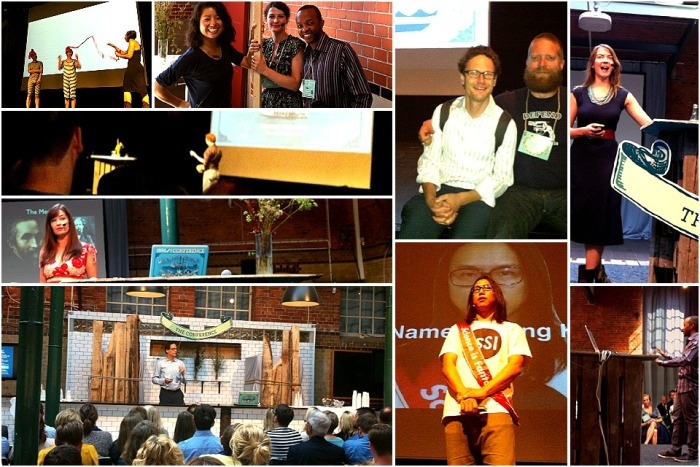
My two favorite twitter moments are from The Lars and Kate Miltner:


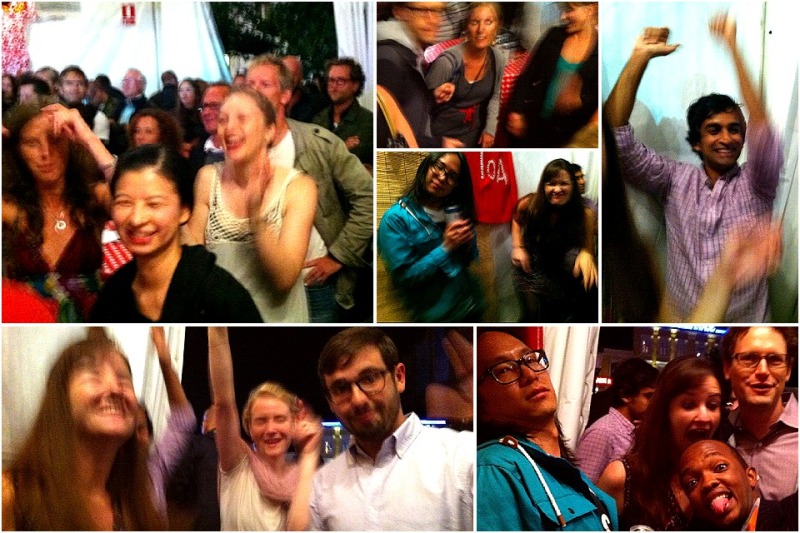
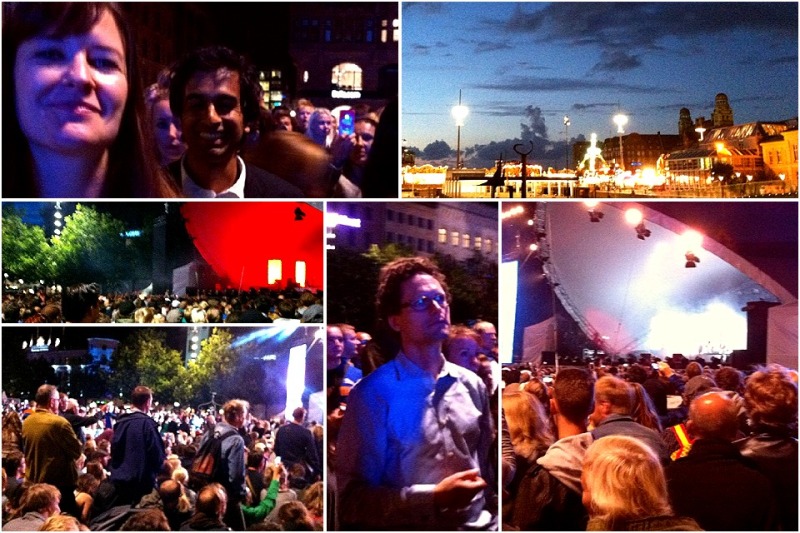
And The Conference hosted
on the second day where they turned a room into a dance hall with DJs (who were female and kicked ass). I had read about Lunch Beat while working in China and I thought it was such a cool idea. A post-lunchbeat jump
with
!.

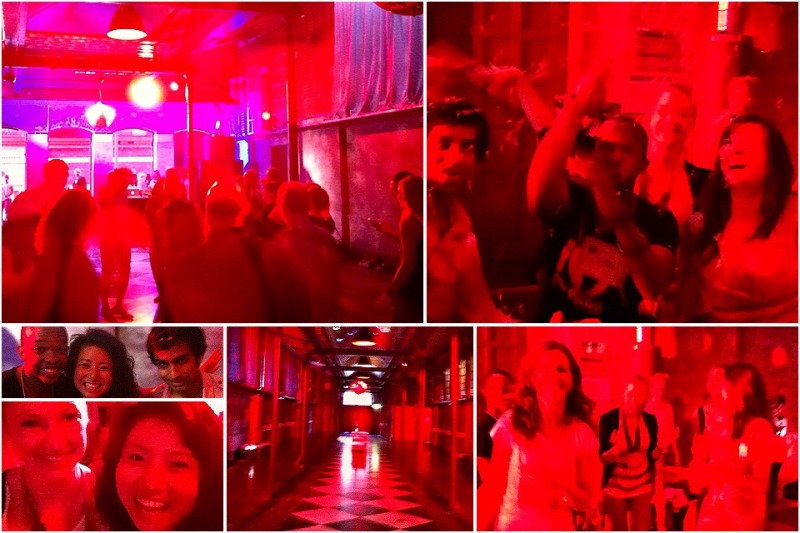
The conference organizers wore user-challenging outfits - Amelia, Jerome, and I had to investigate.

Spa day at Riborsborgs Kallbadhus spa with Oceans 9.


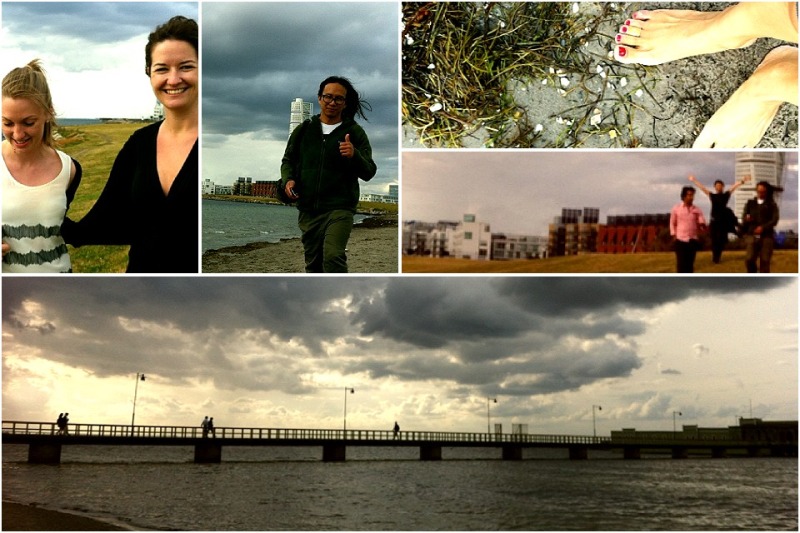

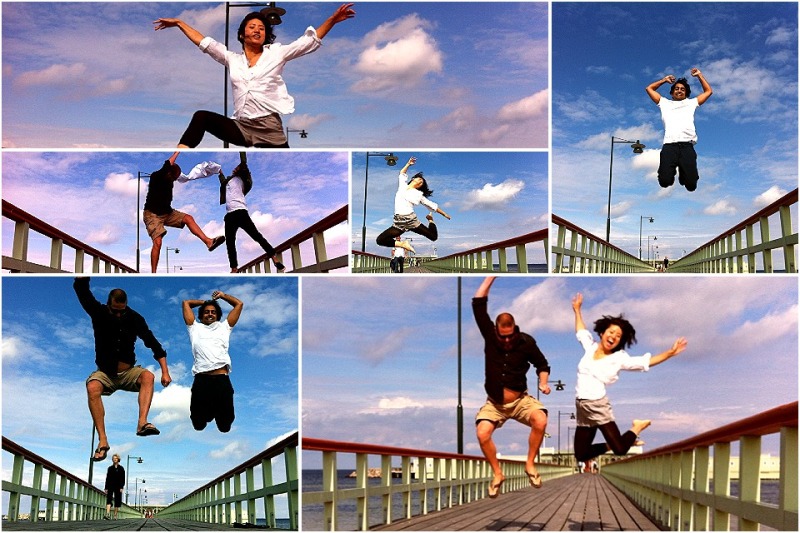
See every one soon lovely new friends!
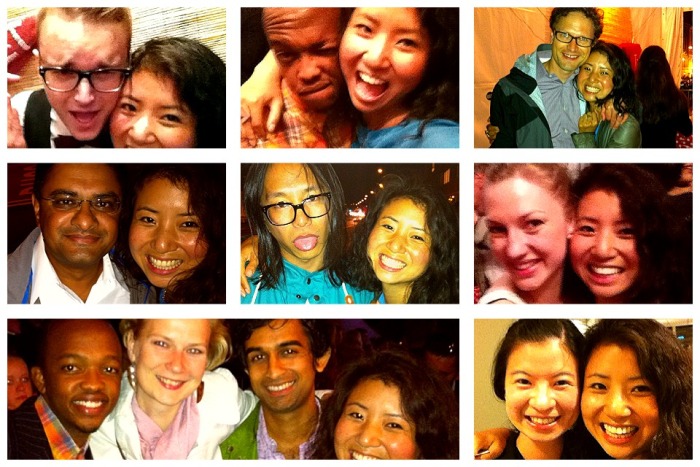
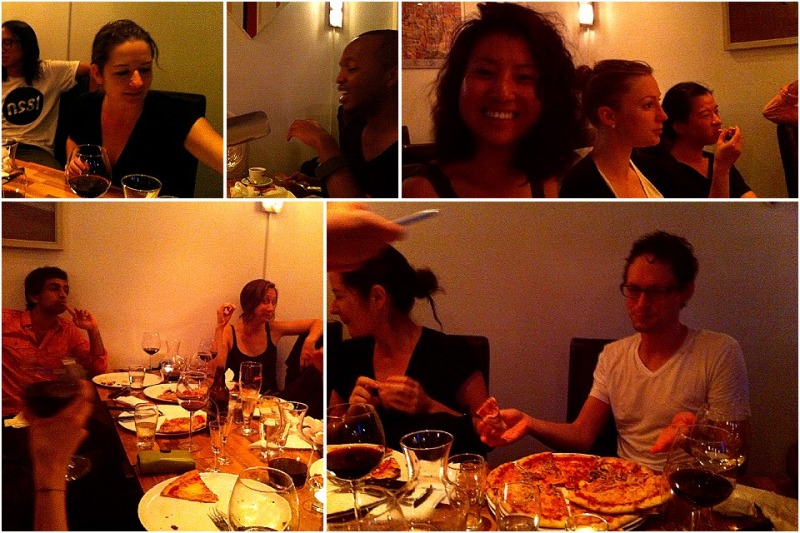

Consulted works for the talk:
Aulnais, G. D. E. L. (2012). Accounting Representation and the Slave Trade: The Guide du Commerce of Gaignat de L'aulnais. The Accounting Historians Journal, 33(2), 1–37.
The Guide du commerce occupies a distinctive place in the French-language literature on accounting. Passed over by most specialists in the history of maritime trade and the slave trade, the manual has never been the subject of a documented historical study. The apparent realism of the examples, the luxury of details and their precision, all bear witness to a deep concern to go beyond a simple apprenticeship in bookkeeping. Promoting itself essentially as "un guide du commerce," the volume offers strategic examples for small local businesses, as well as those engaged in international trade. Yet, the realism also demonstrated the expertise of the author in the eyes of potential purchasers. Inspired by the work of Bottin [2011], we investigate the extent to which the manual reflects real world practices and provides a faithful glimpse into the socio-economic context of the period. Two additional questions are discussed briefly in our conclusion. First, can the work of Gaignat constitute a source document for the history of la traite negriere? The second entails our early deliberations about the place of this volume in the history of the slave trade itself.
Cheshire, C. (2011). Online Trust, Trustworthiness, or Assurance? American Academy of Arts & Sciences 49, 49–58.
Every day, individuals around the world retrieve, share, and exchange information on the Internet. We interact online to share personal information, and answers to questions, make financial transactions, play social games, and maintain professional and personal relationships. Sometimes our online interactions take place between two or more humans. In other cases, we rely on computers to manage information on our behalf. In each scenario, risk and uncertainty are essential for determining possible actions and outcomes. This essay highlights common defciencies in our understanding of key concepts such as trust, trustworthiness, cooperation, and assurance in online environments. Empirical evi- dence from experimental work in computer-mediated environments underscores the promises and perils of overreliance on security and assurance structures as replacements for interpersonal trust. These conceptual distinctions are critical because the future shape of the Internet will depend on whether we build assurance structures to limit and control ambiguity or allow trust to emerge in the presence of risk and uncertainty.
Ciborra, C., & Hanseth, O. (Eds.). (2007). Risk, Complexity and ICT. Edward Elgar Publishing.
This book explores the challenges regarding risks and risk management related to the growing complexity of ICT solutions. The main argument of the book is that the complexity of ICT solutions has continued to grow throughout the history of ICT, and that it now has reached a level that goes beyond our current understanding of ICT solutions and our methods of dealing with them. The contributors aim to demonstrate how the complexity of ICT solutions is increased by various integration efforts. Drawing upon theories of risk society and reflexive modernization, various case studies are used to demonstrate efforts aimed at controlling and managing the complexities of various ICT solutions. Paradoxically, these control and management measures are shown to increase, rather than decrease complexity and risk.
Gooday, G. J. N. (2004). The Morals of Measurement: Accuracy, Irony, and Trust in Late Victorian Electrical Practice [Hardcover] (p. 312). Cambridge University Press.
The Morals of Measurement is a contribution to the social histories of quantification and of electrical technology in nineteenth-century Britain, Germany, and France. It shows how the advent of commercial electrical lighting stimulated the industrialisation of electrical measurement from a skilled labour-intensive activity to a mechanised practice relying on radically new kinds of instruments. Challenging traditional accounts that focus on metrological standards, this book shows instead the centrality of trust when measurement was undertaken in an increasingly complex division of labour with manufactured hardware. Case studies demonstrate how difficult late Victorians found it to agree upon which electrical practitioners, instruments, and metals were most trustworthy and what they could hope to measure with any accuracy. Subtle ambiguities arose too over what constituted 'measurement' or 'accuracy' and thus over the respective responsibilities of humans and technologies in electrical practice. Running alongside these concerns, the themes of body, gender, and authorship feature importantly in controversies over the changing identity of the measurer. In examining how new groups of electrical experts and consumers construed the fairness of metering for domestic lighting, this work charts the early moral debates over what is now a ubiquitous technology for quantifying electricity. Accordingly readers will gain fresh insights, tinged with irony, on a period in which measurement was treated as the definitive means of gaining knowledge of the world.
Heier, J. R. (2010). Accounting for the Business of Suffering: A Study of the Antebellum Richmond, Virginia, Slave Trade. Abacus, 46(1), 60–83.
When the Congress barred the importation of slaves into the United States in 1808, it left the internal slave trade intact. The trade took on a new importance as the slave states of the Old South saw their agricultural economies shift to a point that holding large numbers of slaves became too expensive. During this time, the large agricultural concerns shifted to the New South, where cotton and sugar plantations needed the cheap labour provided by the institution of slavery.As this transition intensified, Rich- mond,Virginia,became a central slave market that facilitated the interstate slave trade as Old South planters chose the course of selling slaves as a valuable commodity rather than the course of manumission.The records of two businesses—Dickinson & Hill and Hector Davis & Company—which plied the slave trade in the Richmond market, have survived into the twenty-first century.These records revealed a primitive, yet sophisticated, process to account for the consignment, purchase, and sales of human merchandise in this haunting story of the ‘business of suffering’.
Mackenzie, D. (2004). Mechanizing Proof: Computing, Risk, and Trust (p. 440). The MIT Press.
Most aspects of our private and social lives -- our safety, the integrity of the financial system, the functioning of utilities and other services, and national security -- now depend on computing. But how can we know that this computing is trustworthy? In Mechanizing Proof, Donald MacKenzie addresses this key issue by investigating the interrelations of computing, risk, and mathematical proof over the last half century from the perspectives of history and sociology. His discussion draws on the technical literature of computer science and artificial intelligence and on extensive interviews with participants.MacKenzie argues that our culture now contains two ideals of proof: proof as traditionally conducted by human mathematicians, and formal, mechanized proof. He describes the systems constructed by those committed to the latter ideal and the many questions those systems raise about the nature of proof. He looks at the primary social influence on the development of automated proof -- the need to predict the behavior of the computer systems upon which human life and security depend -- and explores the involvement of powerful organizations such as the National Security Agency. He concludes that in mechanizing proof, and in pursuing dependable computer systems, we do not obviate the need for trust in our collective human judgment.
Maurer, B. (2002). Repressed futures: fnancial derivatives’ theological unconscious. Economy and, 31(1), 15–36.
Financial derivatives are credited with bringing to the fore a number of sociological and metaphysical problems for modernity, from the instantiation of particular modal- ities of risk to the destabilization of referentiality in knowledge-claims about the world. This essay argues that derivatives can take on the particular power they hold in such accounts only through a repression of their mathematical technique. Opening up the black box of the mathematical technique through a history of statistics, it argues that the founding trauma animating derivatives’ discursive power is the separation of religion from the technical procedures of mathematics and the stochastic models that give form to trading in derivatives. Derivatives’ indexical power is a symptom of this trauma. That symptomatology reveals derivatives to be a moral, not just mathemati- cal, problematic. Keywords: derivatives; social studies of nance; history of statistics; trauma; religion; referentiality.
Maurer, B. (2012). Mobile Money: Communication , Consumption and Change in the Payments Space. Journal of Development Studies, 48(5), 37–41.
This article explores the emerging field of ‘mobile money’: mobile phone-enabled systems for value transfer and storage, primarily in the developing world, which are heralded as signal interventions in the effort to broaden financial inclusion and bank the ‘unbanked.’ Focusing on the stories that circulate in the emergent network of expertise that is calling ‘mobile money’ into being, it discusses how economic techniques and social narratives about markets – specifically, narratives about the opportunities for profit and financial inclusion in the ‘payments space’ – format a consumer market for mobile money. Furthermore, it asks whether end-users’ repurposing of mobile money – and the use of airtime as currency – heralds a new means of exchange or store of value, potentially remaking money in the process.
Nelson, W., Sauder, M., & Espeland, W. N. (2012). Rankings and Reactivity: How Public Measures Recreate Social Worlds. American Journal of Sociology., 113(1), 1-40.
Recently, there has been a proliferation of measures responding to demands for accountability and transparency. Using the example of media rankings of law schools, this article argues that the meth- odological concept of reactivity—the idea that people change their behavior in reaction to being evaluated, observed, or measured— offers a useful lens for disclosing how these measures effect change. A framework is proposed for investigating the consequences, both intended and unintended, of public measures. The article first iden- tifies two mechanisms, self-fulfilling prophecy and commensuration, that induce reactivity and then distinguishes patterns of effects pro- duced by reactivity. This approach demonstrates how these increas- ingly fateful public measures change expectations and permeate in- stitutions, suggesting why it is important for scholars to investigate the impact of these measures more systematically.
Park, H., & Blenkinsopp, J. (2011). The roles of transparency and trust in the relationship between corruption and citizen satisfaction. International Review of Administrative Sciences, 77(2), 254-274.
Reducing corruption and improving citizen satisfaction are important aims of government, yet the link between these two policy aims has rarely been explored. This article reports a study into the roles played by transparency and trust in the relationship between governmental corruption and citizen satisfaction with public services. The study was based on data gathered in South Korea to evaluate a specific initiative that had sought to reduce corruption and increase citizen satisfaction with public works programmes. The data indicated that the relationship between corruption and satisfaction was moderated by transparency and partially mediated by trust. Points for practitioners The study sheds light on the roles of transparency and trust in the relationship between corruption and citizen satisfaction with public services, and thus provides insights for developing policy aimed at curtailing corruption and improving satisfaction. Keywords citizen satisfaction, corruption, transparency, trust
Quinn, J. M., & Tran, T. Q. (2010). Attractive Phones Don’t Have To Work Better: Independent Effects of Attractiveness , Effectiveness , and Efficiency on Perceived Usability. Proceedings of the 28th international conference on Human factors in computing systems - CHI ’10 (pp. 353–362). ACM Press.
Participants sometimes rate products high in usability despite experiencing obvious usability problems (low effectiveness or efficiency). Is it possible that this occurs because high product attractiveness compensates for low effectiveness/efficiency? Previous research has not investigated the interplay between attractiveness, effectiveness, and efficiency to determine whether attractiveness accounts for additional variance in usability ratings beyond that which is explained by effectiveness and efficiency. The present research provides the first test of this idea. Using data from usability testing, we demonstrate that attractiveness, effectiveness, and efficiency each has an independent influence on usability ratings and, in the present research, attractiveness had the largest impact. We report results of quantitative analyses that suggest multiple mechanisms could be responsible for the relationship between attractiveness and usability.
Shirky, C. (2009). Here Comes Everybody: The Power of Organizing Without Organizations (p. 352). Penguin (Non-Classics).
A revelatory examination of how the wildfirelike spread of new forms of social interaction enabled by technology is changing the way humans form groups and exist within them, with profound long-term economic and social effects-for good and for ill.